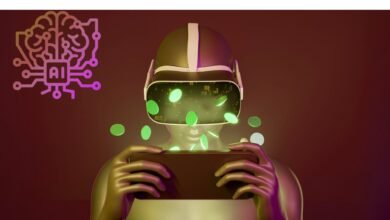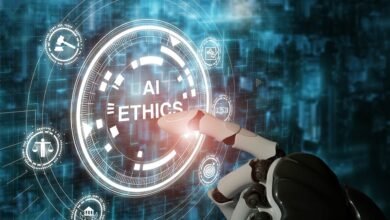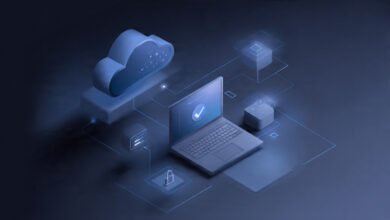How Artificial Intelligence Is Helping Scientists Explore the Cosmos
AI in space exploration is transforming cosmic discoveries. Learn how artificial intelligence helps scientists analyze unlock universe mysteries.

Artificial Intelligence (AI) is revolutionizing humanity’s quest to understand the universe, providing scientists with powerful tools to decode cosmic mysteries. From analyzing vast astronomical datasets to guiding autonomous spacecraft, AI is accelerating discoveries that would take humans decades to achieve. Machine learning algorithms can identify distant exoplanets, map dark matter, and even simulate the birth of galaxies tasks that were once unimaginably complex. As telescopes like the James Webb Space Telescope (JWST) generate unprecedented amounts of data, AI has become indispensable in transforming raw information into groundbreaking scientific insights.
The marriage of AI and space exploration is unlocking new frontiers in astrophysics, cosmology, and planetary science. Whether it’s enhancing deep-space mission planning, predicting supernovae, or filtering out noise in radio signals from distant stars, AI is reshaping how we explore the cosmos. As technology advances, AI-driven discoveries are not only expanding our knowledge of the universe but also raising profound questions about the origins of life, the nature of dark energy, and the possibility of extraterrestrial intelligence. The future of cosmic exploration is increasingly intertwined with artificial intelligence, promising a new era of scientific breakthroughs.
How AI Is Helping Scientists Explore the Cosmos
The Role of AI in Modern Astronomy
The field of astronomy has always been data-intensive, but with the advent of advanced telescopes and space missions, the volume of data has grown exponentially. Traditional methods of analysis are no longer sufficient to handle the sheer scale of information generated by instruments like the James Webb Space Telescope (JWST) and the Large Synoptic Survey Telescope (LSST). AI, particularly machine learning and deep learning algorithms, has emerged as a critical tool in processing and interpreting this data efficiently.
AI in Space Exploration and Mission Planning
Beyond observational astronomy, AI plays a crucial role in space exploration. Autonomous spacecraft and rovers, such as NASA’s Perseverance Mars rover, rely on AI to navigate unfamiliar terrain, avoid obstacles, and select scientifically valuable targets for analysis. AI-driven systems enable real-time decision-making, reducing reliance on delayed communications from Earth. Moreover, AI assists in mission planning by optimizing trajectories, managing fuel consumption, and predicting potential hazards. For example, the European Space Agency (ESA) uses AI to plan efficient routes for interplanetary missions, minimizing travel time and energy expenditure. AI also enhances satellite operations, improving image resolution and automating anomaly detection to prevent system failures.
Simulating the Universe with AI
Understanding the universe’s evolution requires complex simulations that model the formation of galaxies, stars, and cosmic structures. Traditional simulations demand immense computational power, but AI offers a faster alternative. Neural networks can now simulate cosmic phenomena with remarkable precision, reducing computation time from months to days. Researchers use generative adversarial networks (GANs) to create realistic simulations of galaxy formations, helping scientists test theoretical models against virtual universes. AI also aids in analyzing Cosmic microwave background (CMB) radiation, providing insights into the early universe’s conditions and the nature of dark energy.
Future Prospects
Enhanced Exoplanet Discovery and Analysis
Artificial Intelligence will play an even greater role in detecting and characterizing exoplanets as next-generation telescopes like the Nancy Grace Roman Space Telescope and PLATO come online. Machine learning models will analyze atmospheric data to identify potential biosignatures chemical markers that could indicate alien life. Deep learning algorithms will also help prioritize the most promising exoplanets for further study, drastically reducing the time needed to find habitable worlds.
Autonomous Spacecraft and Robotic Exploration
Future missions to Mars, Europa, and beyond will rely on AI-powered autonomy to make real-time decisions without Earth-based guidance. Rovers and drones will use computer vision to navigate treacherous terrain, while AI-driven drills and sampling systems will select the most scientifically valuable targets. Swarms of miniature AI satellites could one day explore asteroid belts or lunar caves, working together to map uncharted regions.
AI-Optimized Telescope Operations
As astronomical datasets grow exponentially, AI will be crucial in managing and interpreting observations. Adaptive scheduling algorithms will optimize telescope time, adjusting observations based on weather, celestial events, and scientific priorities. AI will also help remove distortions from space imagery, enhancing the clarity of deep-space photographs and enabling discoveries at the edge of observable universe.
Simulating the Universe with Unprecedented Precision
Cosmologists will use AI-driven simulations to model galaxy formation, dark matter distribution, and the early universe with near-perfect accuracy. Neural networks trained on existing data will generate synthetic universes, allowing scientists to test theories about cosmic inflation, black hole mergers, and the nature of dark energy. These simulations could help solve long-standing mysteries, such as why the universe’s expansion is accelerating.
The Search for Extraterrestrial Intelligence (SETI)
Artificial Intelligence is revolutionizing the hunt for alien signals by filtering out interference and identifying potential technosignatures radio or laser transmissions from advanced civilizations. Future AI-powered SETI initiatives will scan millions of star systems simultaneously, using anomaly detection to flag unusual patterns that might indicate intelligent life. Breakthrough Listen and similar projects are already employing machine learning to sift through vast amounts of radio telescope data.
AI and Quantum Computing in Astrophysics
The combination of Artificial Intelligence and quantum computing could solve problems that are currently intractable, such as simulating quantum gravity or decoding the behavior of neutron stars. Quantum machine learning models may one day process astronomical data at unprecedented speeds, enabling real-time analysis of cosmic events like supernovae or gamma-ray bursts.
Democratizing Space Exploration with AI
AI tools will make space science more accessible, allowing citizen scientists and researchers in developing nations to contribute to major discoveries. Open-source AI platforms will enable amateur astronomers to analyze telescope data, classify galaxies, and even assist in tracking near-Earth asteroids. This collaborative approach could accelerate humanity’s collective understanding of the cosmos.
Ethical and Philosophical Considerations
As Artificial Intelligence takes on a greater role in cosmic exploration, questions will arise about machine autonomy in scientific discovery. AI be allowed to prioritize research goals. We ensure transparency in AI-driven findings. These discussions will shape the future of space science, balancing technological advancement with human oversight.
An AI-Powered Cosmic Future
The integration of AI into astronomy and space exploration is only beginning. From discovering alien worlds to simulating the multiverse, artificial intelligence will be at the forefront of humanity’s quest to understand the universe. As these technologies evolve, they promise not just new scientific insights but a fundamental shift in how we explore the final frontier.
Read More: Space Tech Innovations That Are Changing Life on Earth
Conclusion
Artificial Intelligence (AI) is revolutionizing humanity’s quest to understand the universe, providing scientists with powerful tools to decode cosmic mysteries. From analyzing vast astronomical datasets to guiding autonomous spacecraft, AI is accelerating discoveries that would take humans decades to achieve. Machine learning algorithms can identify distant exoplanets, map dark matter, and even simulate the birth of galaxies tasks that were once unimaginably complex. As telescopes like the James Webb Space Telescope (JWST) generate unprecedented amounts of data, AI has become indispensable in transforming raw information into groundbreaking scientific insights.
The marriage of AI and space exploration is unlocking new frontiers in astrophysics, cosmology, and planetary science. Whether it’s enhancing deep-space mission planning, predicting supernovae, or filtering out noise in radio signals from distant stars, AI is reshaping how we explore the cosmos. As technology advances, AI-driven discoveries are not only expanding our knowledge of the universe but also raising profound questions about the origins of life, the nature of dark energy, and the possibility of extraterrestrial intelligence. The future of cosmic exploration is increasingly intertwined with artificial intelligence, promising a new era of scientific breakthroughs.
FAQs
How does Artificial Intelligence help in discovering exoplanets?
Artificial Intelligence analyzes light curves from telescopes like Kepler, identifying subtle dips in brightness caused by planets transiting their host stars.
Can Artificial Intelligence simulate the entire universe?
While not the entire universe, Artificial Intelligence can simulate galaxy formations and cosmic structures faster than traditional methods.
What role does Artificial Intelligence play in Mars missions?
Artificial Intelligence helps rovers like Perseverance navigate, select samples, and avoid obstacles autonomously.
How does AI improve telescope data analysis?
Machine learning algorithms classify galaxies, detect supernovae, and enhance image processing from telescopes like JWST.
What are the limitations of Artificial Intelligence in astronomy?
Challenges include data bias, model interpretability, and the need for extensive training datasets.











2 Comments